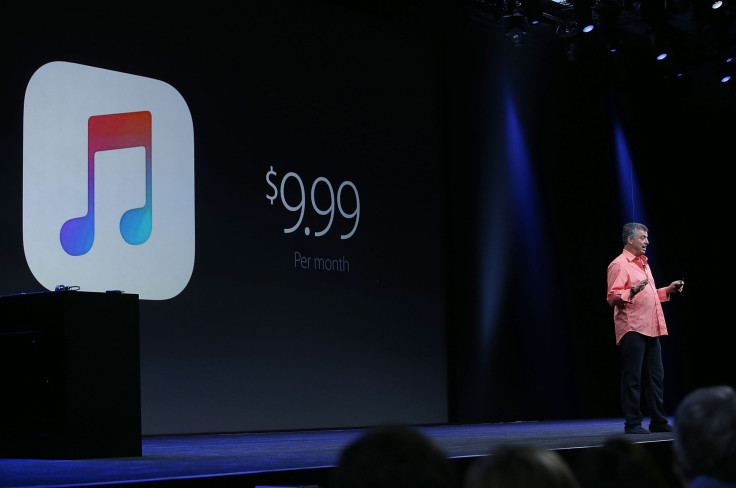Apple Music Hits 11 Million Users: But How Will It Fare Once Free Trials Are Over?

In its first few weeks, Apple Music has managed to snag 11 million users. But can Apple keep them?
As part of the launch of Apple’s streaming music subscription service, it offered customers a three-month free trial to sample its wares. That includes access to its catalog of 30 million songs, saving music for offline listening, content recommendations and more. After the free ride comes to a halt, individuals will have to shell out $9.99 a month or $14.99 for a family plan that supports up to six users.
There are two ways to look at Apple Music’s current user base. “More than 100 million people bought music from iTunes last year, so only 10 percent of them have converted to a trial,” said Mark Mulligan, analyst at Midia Research. “Apple Music was part of the 8.4 iOS upgrade -- Apple has a very high success rate of iOS updates with the majority of its users updating early. So we can assume that the vast majority of consumers that updated to 8.4 did not take up the trial.”
On the other hand, Apple Music has attained a large “premium” user base in a shorter period of time than Spotify and other streaming services. In comparison, it took nine years for Spotify to reach 20 million paid users -- double its paid subscriber base in 2014 -- and 75 million overall active users.
Those 11 million don’t include Android users, since Apple has yet to launch the service on Google’s mobile OS. But Apple shouldn’t expect them to come over in drones when it releases its Android app. “I suspect that Android users would probably be rather more skeptical [of Apple Music],” said Peter Richardson, research director at Counterpoint Research. “The Apple fanboy -- people invested emotionally into the Apple franchise -- are more willing to try out Apple services. If you’re an Android user, you’ve consciously decided not to use Apple products and services.”
Apple Music isn’t without its snags. Loop Insight’s Jim Dalrymple noted in July that a bug in the service can prevent duplicate songs from being added. Take a quick peek at Apple Music’s support page and you’ll find plenty of customers with various issues, including displaying incorrect album art.
One of many examples of how @AppleMusic messed up my album covers. Is #AppleMusic ever going to fix this bug? pic.twitter.com/5ycoe2CybS
— J.J. Mundell (@JJ_Mundell) August 6, 2015The problems haven’t gone unnoticed and Apple says it’s working on a fix. “We're aware that some users have experienced some issues, and we hate letting them down, but we're releasing updates as fast as we can to address those issues,” Apple senior vice president of Internet and software, Eddy Cue, told USA Today.
It’s not the first time Apple made some bad moves with its software offerings. “Apple is very strong on the device side,” said Richardson. “But they’ve had a few missteps in the side of services -- Maps being a classic case.” Apple Maps in 2012 replaced Google Maps in iOS. Users were quick to find a number of bugs with it, including incorrect street names and even directions that brought some iPhone owners across an airport taxiway in Fairbanks, Alaska.
A more recent example is the U2 album Apple gave to iTunes and iOS customers for free last year. That resulted in a flurry of customers looking for ways to remove Apple’s gift from their libraries.
Even after Apple gets the bugs sorted out in Apple Music, the world won’t see how it fares until customers start paying for it in September. Apple is gunning for 100 million subscribers, according to the Associated Press. But whether they can reach that mark remains to be seen.
“The real test for Apple will be how many paying users it has after 12 months,” said Mulligan. “It should hold onto at least a quarter of those in the long run, though about half will likely pay for at least one month before they cancel their subscription. So that means Apple should have at least 5 million paying subs by the end of this calendar year. I don't see Apple getting anywhere near to 100 million in that time scale.”
© Copyright IBTimes 2024. All rights reserved.





















